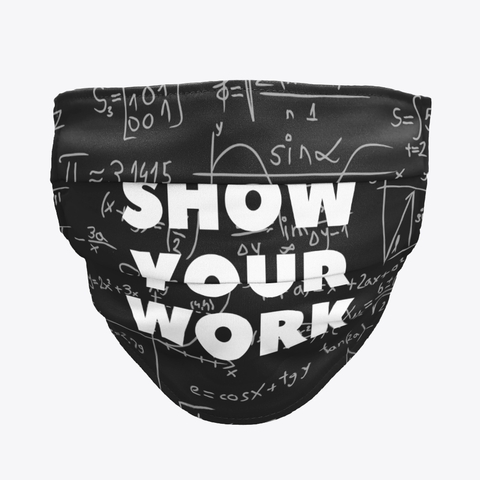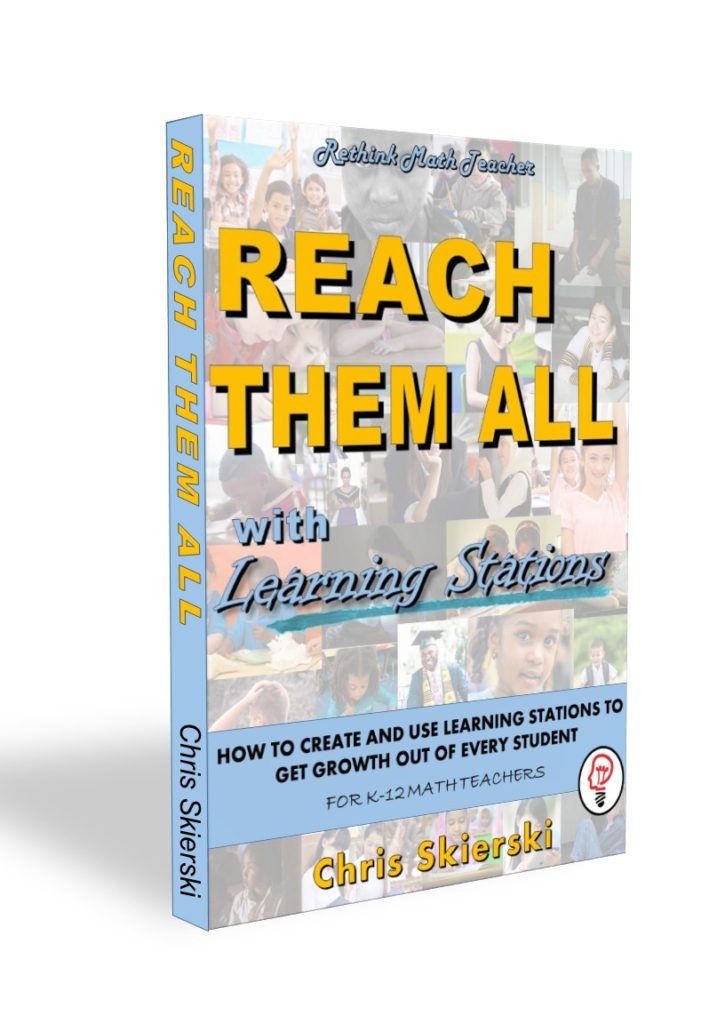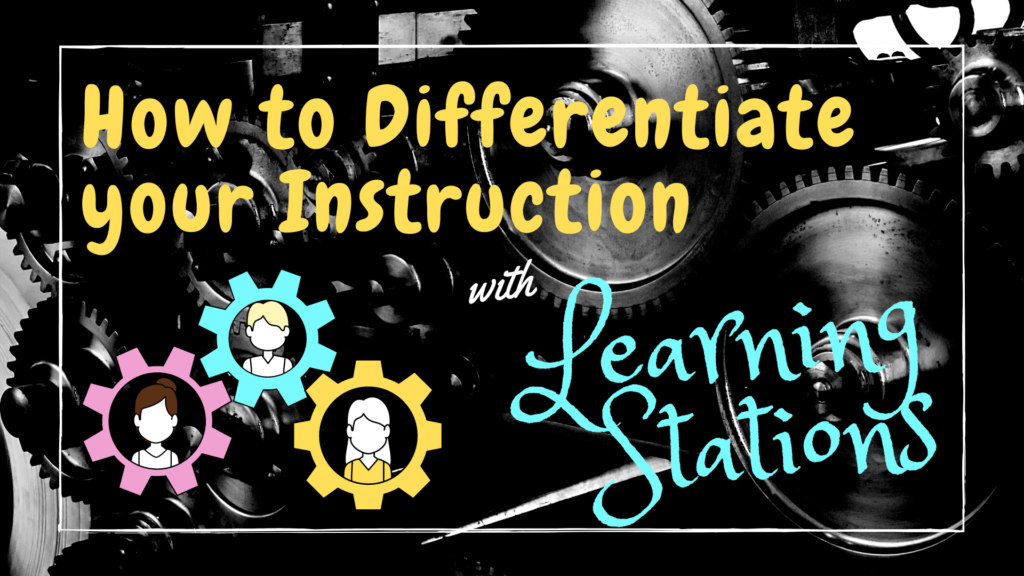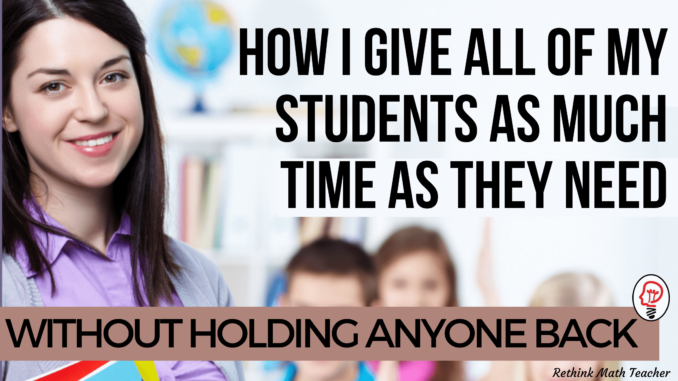
Without Holding Anyone Back
One of the most effective strategies you can implement as a teacher – especially a math teacher – is to provide your students with as much practice as they need to master the concept being taught.
How Much Practice is Needed?
Various studies have been conducted to determine how many practice repetitions is needed for someone to master a new skill. The consensus of these studies usually says, “it normally takes the average person between 20 and 30 repetitions to master a new skill.”
This is true for all areas of life: athletics, fine arts, academics, etc.
Is this Accurate?
It is. However, there are caveats.
Exception 1 – Perfect Practice
Vince Lombardi famously said, “Practice does not make perfect, perfect practice makes perfect.
For example, if you are teaching a basketball play to your team, and they practice the play 50 times, but never do it correctly, they won’t have mastered the skill, and they are still not able to do the play correctly even though they’ve done above the 30 repetitions.
This is also true in your classroom. If a student is trying to learn their spelling words and they write the word 40 times, but each time they do so incorrectly, they are actually worse then when they began (because they have reinforced the skill incorrectly).
If your math students are practicing your math skill, but are not doing so correctly, they will not be closer to learning the skill. This is why immediate feedback is so important. Read more about the value of immediate feedback by clicking here.
Exception 2 – Not the Average
Notice in the answer above that it says that the average person needs 20-30 practice repetitions. However, many of your students are not average. Some are above average, and will require less practice, and some are below average and will require more practice.
This is true in all facets of life. Some of your students are natural musicians, quickly able to master different instruments or different skills on those instruments becoming experts in an unusually quick amount of time. However, that same student might be terrible at skateboarding, requiring much more practice than the average person to master the concept.
The same is true for academics. You have some students who are naturals, and they quickly grasp the concepts you are teaching them. They fully understand it in a short period of time, and do not need the 20-30 practice repetitions that others need.
And you have students who are not naturals, and they require more practice than the rest of the class. Sometimes needing much more practice than you would expect.
Exception 3 – Prerequisite Skills
The above data assumes a level playing ground, where all students have the necessary prerequisite skills needed to work on the skill you are teaching them.
For example, if you were teaching a group of young people how to ride a skate board, and one of the students was already a snowboarder or a surfer, she would be ahead of the rest of the class and will likely pick up the skill much faster than the rest of the group.
On the other hand, if you had a baby in the room who could not yet walk, he would take much longer to learn how to skateboard, because he must first learn to walk.
This is obviously an exaggerated example to illustrate a point.
Many of the skills you are teaching in your math class have prerequisite skills. For example, try to teach someone how to do long division if they don’t know their times tables. Or try to teach someone how to graph an equation if they still can’t plot a point on the coordinate plane.
All this is to say that some of your students will require remediation on prerequisite skills to be able learn the concepts you are currently teaching your class. This will dramatically increase the amount of practice repetitions and time it takes them to master what you are teaching.
Read how I remediate multiple prerequisite skills by clicking here
The Problem with Giving them as Much Time as They Need
So we agree that some of your students will master what you’re teaching very quickly, some will take the normal amount of time, and some will take longer than the rest of the class.
This always creates an issue for the teacher, who is left with a dilemma:
Do you accommodate the faster students, and move the rest of the class on to the next skill before they’re ready? Or do you slow down, and provide more practice for your slower paced students, forcing everyone else to be held back?
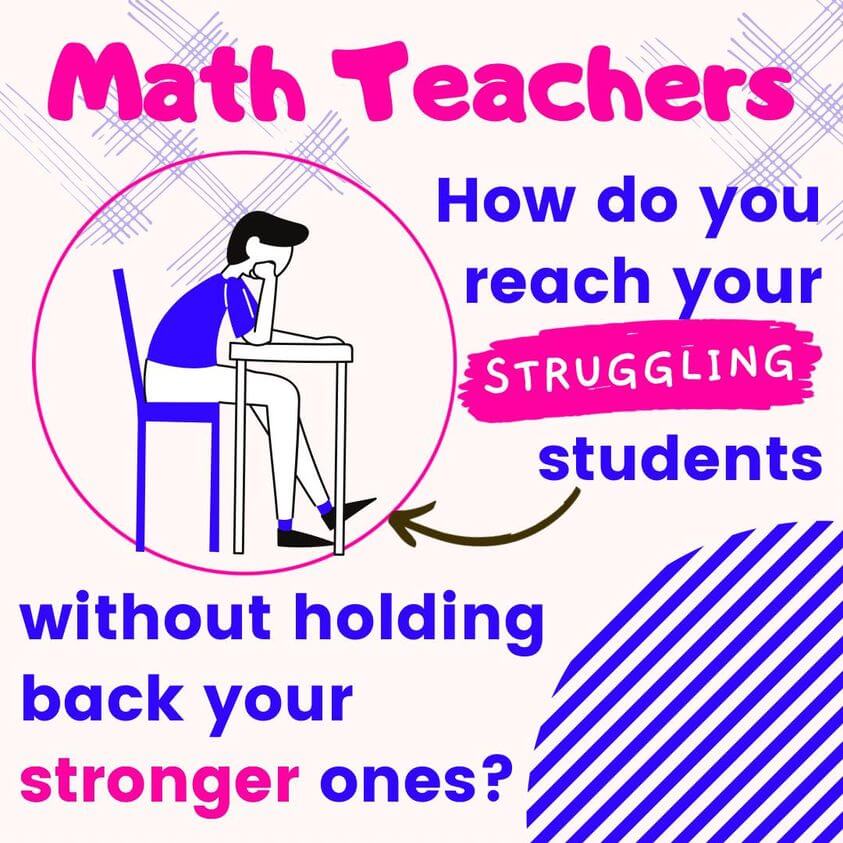
Neither is ideal.
If you move on before some of your students are ready, they will feel defeated and unvalued. They also will not be ready for the next skill you are teaching and thus not do well on it either. Eventually, they will give up and will likely become a classroom management issue as they become apathetic, hopeless, and resentful.
If you slow down to accommodate your lower leveled students, you hold back the rest of the class, forcing them to continue to work on a skill that they have already mastered. They will get bored and also can become a classroom management issue. This also limits their growth. They could be mastering much more if you would let them progress, but for the sake of the few, they are retained. Their work level and effort will decrease since they are not being challenged.
What Usually Happens
Normally, the teacher paces the class based on the majority – the middle of the pack. This, while making the most logical sense, actually punishes both groups: your strong students who are still held back, and your weaker students who are still pushed ahead before they are ready.
What is Needed?
What’s needed is a way to push the stronger students ahead as soon as they master the skill while allowing your other students to stay on the concept for as long as they need – so that they can get as many practice repetitions as they need to master the skill.
With this type of system, your stronger students who only need 10-20 repetitions to master the skill could get that much practice and then move on to the next skill, being appropriately challenged. Your average students could get the 20-30 repetitions they need, and your weaker students could get the 30+ repetitions that they need.
Everyone’s needs are met. Everyone receives as much (or as little) practice as they need.
This way, all students are appropriately challenged at their level and no one is left behind or pushed on to a new skill before they are ready.
The Solution
In order to accelerate my stronger students and accommodate my slower-moving students, I implement a system that allows each student to work on the skill for as long as they need to until they have mastered the concept.
If, for example, we are working on exponents. All of my students would begin working on it. My stronger students, who quickly mastered the skill, would then be pushed on to the next skill, while my weaker students would remediate and continue working on exponents.
And I would allow them to continue working on exponents (or whatever skill we were working on) until they mastered the concept. I would accomplish this through lots of practice with immediate feedback, and quality tutorials to help them as they struggled.
The Problem with the Solution
The problem is obvious. You will have students working on multiple skills at the same time.
How can you have a class where some students are working on exponents, while others are working on zero and negative exponents and others are working on operations with exponents, and still others are working on scientific notation?
The issue quickly compounds.
But this is exactly what I do.
For a portion of my class, all of my students work in a learning station on whatever skill they are currently trying to master. I chart their progress so that we don’t get confused on who is where, and I provide regular assessments to gauge their mastery – as well as to celebrate their success.

Does it Work
When you think about it practically, you realize that allowing each student as much practice as they need makes the most sense. The benefits are numerous
- Students are challenged at their appropriate level
- No one is left behind
- Classroom management issues decrease
- Sentiments towards school (and you) increase
- Stronger students are free to accelerate and reach their full potential
- Weaker students are given the time and practice attempts they need to find success
- Everyone finds success
- Data-driven instruction
- Celebrating success is easy
In short, yes it works. My students had amazing success and I have helped hundreds of teachers implement this system in their classroom as well through my book and online course.
How to Begin
I have multiple articles that can help you get started.
- 7 Reasons you Should Differentiate with Learning Stations
- Challenging your Stronger Students, While Reacher your Weaker Ones
- Why You Should Create Learning Stations
Or, you can take the shortcut and read the book or enroll in the online course.
The Online Course
Learn how to create Learning Stations for your students that will give them as much practice as they need, with immediate feedback, while differentiating your instruction to reach all of your students.




